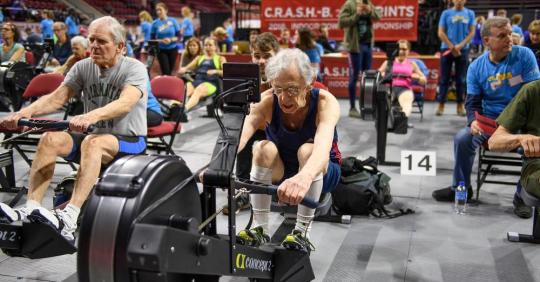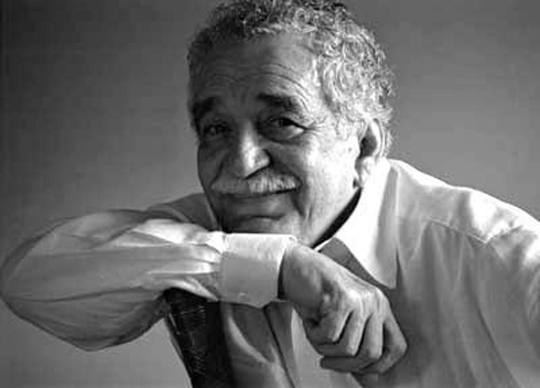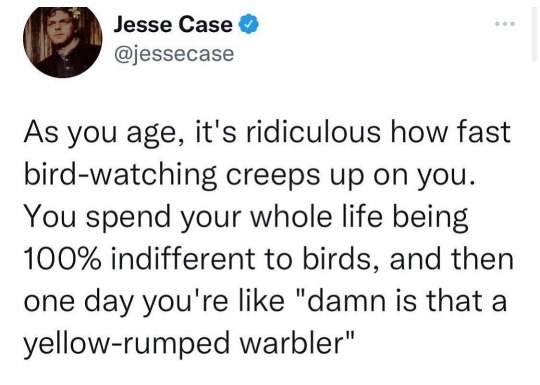#ageing
Text
Sorry if you're already over 50, I ran out of room (you're welcome to leave your thoughts in the tags or replies!)
If you're younger than 10, get the fuck off Tumblr. People are saying swears on here!
[EDIT: It's OK to vent a bit about negative feelings in the comments/tags, but if you're gonna talk about killing yourself, do me a favour and fucking don't]
#polls#birthdays#ageing#milestones#organic home grown content#for me (28) while there's an element of 'where the fuck did the time go?'#30 sounds all right. even kind of nice#you're still on the younger side of adulthood but you're no longer one of those 'barely an adult' new adults#although some people might feel that change at 25#i feel like 40 is gonna be harder to deal with. that still feels like the age people's parents are#though it might look different once i'm in my 30s#100 tier#1000 tier#suicide mention
4K notes
·
View notes
Text
Buying ramen aged me by 50 years and I was convinced buying better ramen would return me to my original age.
805 notes
·
View notes
Text

Quaeris, quid doceam? Etiam seni esse discendum.*
Seneca
You ask, what may I teach? That an old man must learn too.*
Marcel Duchamp plays chess with Eve Babitz, 1963.
#seneca#latin#classical#quote#old age#wisdom#maturity#ageing#growing old#teaching#eve babitz#chess#marcel duchamp#arts#culture#art
711 notes
·
View notes
Text
I'm still impacted by, "One day your parents picked you up for the last time".
And now I just read, "One day you played pretend outside for the last time with your friends as a kid and never realized it".
126 notes
·
View notes
Text

Sometimes, it doesn't matter if she can't cook! 😏
#daily quotes#emotions#life facts#serious thoughts#feelings#psychanalyse#romance#learning#love#intimacy#sentiments#life lessons#psychology#sexuality#ageing#health#wisdom#relationship
256 notes
·
View notes
Text

185 notes
·
View notes
Text

#dark aesthetic#zoupa#automata#tenebrous#futurism#retrofuture#retro scifi#aging#ageing#dark art#goth aesthetic#gothic#dark beauty#flowerpower#alt aesthetic#alternative goth#darkness#gothcore#gothgoth#goth gifs#grunge#black aesthetic#goth art#gothic art#horror aesthetic#spooky aesthetic#spooky#goth#alternative#romantic goth
20 notes
·
View notes
Text
Words of wisdom
#tiktok#self help#maiden mother crone#wisdom from age#thoughts of wisdom#wise words#words of wisdom#women who run with the wolves#wisdom#wise sayings#social studies#ageing#sociology
24 notes
·
View notes
Text
growing sour
those in my presence
provoke a fear
that one day I will grow
too old and withered to empathise
does ageing with the condition of resentment
remain a privilege or a curse?
22 notes
·
View notes
Text
“We turn not older with years, but newer every day.”
— Emily Dickinson
25 notes
·
View notes
Text

At 93, he’s as fit as a 40-year-old. His body offers lessons on aging.
The human body maintains the ability to adapt to exercise at any age, showing that it’s never too late to start a fitness program
By Gretchen Reynolds
For lessons on how to age well, we could do worse than turn to Richard Morgan.
At 93, the Irishman is a four-time world champion in indoor rowing, with the aerobic engine of a healthy 30- or 40-year-old and the body-fat percentage of a whippet. He’s also the subject of a new case study, published last month in the Journal of Applied Physiology, that looked at his training, diet and physiology.
Live well every day with tips and guidance on food, fitness and mental health, delivered to your inbox every Thursday.
Its results suggest that, in many ways, he’s an exemplar of fit, healthy aging — a nonagenarian with the heart, muscles and lungs of someone less than half his age. But in other ways, he’s ordinary: a onetime baker and battery maker with creaky knees who didn’t take up regular exercise until he was in his 70s and who still trains mostly in his backyard shed.
Even though his fitness routine began later in life, he has now rowed the equivalent of almost 10 times around the globe and has won four world championships. So what, the researchers wondered, did his late-life exercise do for his aging body?
Lessons on aging from active older people
“We need to look at very active older people if we want to understand aging,” said Bas Van Hooren, a doctoral researcher at Maastricht University in the Netherlands and one of the study’s authors.
Many questions remain unanswered about the biology of aging, and whether the physical slowing and declines in muscle mass that typically occur as we grow older are normal and inevitable or perhaps due, at least in part, to a lack of exercise.
Start the year fresh
If some people stay strong and fit deep into their golden years, the implication is that many of the rest of us might be able to as well, he said.
Helpfully, his colleague Lorcan Daly, an assistant lecturer in exercise science at the Technological University of the Shannon in Ireland, was quite familiar with an example of successful aging. His grandfather is Morgan, the 2022 indoor-rowing world champion in the lightweight, 90-to-94 age group.
What made Morgan especially interesting to the researchers was that he hadn’t begun sports or exercise training until he was 73. Retired and somewhat at loose ends then, he’d attended a rowing practice with one of his other grandsons, a competitive collegiate rower. The coach invited him to use one of the machines.
“He never looked back,” Daly said.
Highest heart rate on record
They invited Morgan, who was 92 at the time, to the physiology lab at the University of Limerick in Ireland to learn more, measuring his height, weight and body composition and gathering details about his diet. They also checked his metabolism and heart and lung function.
They then asked him to get on a rowing machine and race a simulated 2,000-meter time trial while they monitored his heart, lungs and muscles.
“It was one of the most inspiring days I’ve ever spent in the lab,” said Philip Jakeman, a professor of healthy aging, physical performance and nutrition at the University of Limerick and the study’s senior author.
Morgan proved to be a nonagenarian powerhouse, his sinewy 165 pounds composed of about 80 percent muscle and barely 15 percent fat, a body composition that would be considered healthy for a man decades younger.
During the time trial, his heart rate peaked at 153 beats per minute, well above the expected maximum heart rate for his age and among the highest peaks ever recorded for someone in their 90s, the researchers believe, signaling a very strong heart.
His heart rate also headed toward this peak very quickly, meaning his heart was able to rapidly supply his working muscles with oxygen and fuel. These “oxygen uptake kinetics,” a key indicator of cardiovascular health, proved comparable to those of a typical, healthy 30- or 40-year-old, Daly said.
Exercising 40 minutes a day
Perhaps most impressive, he developed this fitness with a simple, relatively abbreviated exercise routine, the researchers noted.
Consistency: Every week, he rows about 30 kilometers (about 18.5 miles), averaging around 40 minutes a day.
A mix of easy, moderate and intense training: About 70 percent of these workouts are easy, with Morgan hardly laboring. Another 20 percent are at a difficult but tolerable pace, and the final 10 at an all-out, barely sustainable intensity.
Weight training: Two or three times a week, he also weight-trains, using adjustable dumbbells to complete about three sets of lunges and curls, repeating each move until his muscles are too tired to continue.
A high-protein diet: He eats plenty of protein, his daily consumption regularly exceeding the usual dietary recommendation of about 60 grams of protein for someone of his weight.
How exercise changes how we age
“This is an interesting case study that sheds light on our understanding of exercise adaptation across the life span,” said Scott Trappe, director of the Human Performance Laboratory at Ball State University in Indiana. He has studied many older athletes but was not involved in the new study.
“We are still learning about starting a late-life exercise program,” he added, “but the evidence is pretty clear that the human body maintains the ability to adapt to exercise at any age.”
In fact, Morgan’s fitness and physical power at 93 suggest that “we don’t have to lose” large amounts of muscle and aerobic capacity as we grow older, Jakeman said. Exercise could help us build and maintain a strong, capable body, whatever our age, he said.
Of course, Morgan probably had some genetic advantages, the scientists point out. Rowing prowess seems to run in the family.
And his race performances in recent years have been slower than they were 15, 10 or even five years ago. Exercise won’t erase the effects of aging. But it may slow our bodies’ losses, Morgan’s example seems to tell us. It may flatten the decline.
It also offers other, less-corporeal rewards. “There is a certain pleasure in achieving a world championship,” Morgan told me through his grandson, with almost comic self-effacement.
“I started from nowhere,” he said, “and I suddenly realized there was a lot of pleasure in doing this.”
15 notes
·
View notes
Photo

“Age has no reality except in the physical world. The essence of a human being is resistant to the passage of time. Our inner lives are eternal, which is to say that our spirits remain as youthful and vigorous as when we were in full bloom. Think of love as a state of grace, not the means to anything, but the alpha and omega. An end in itself.”
― Gabriel García Márquez/"Love in the Time of Cholera"
[Follies Of God]
409 notes
·
View notes
Photo

C’est grâce aux risques que l’on prend que la vie devient vivable.
- Charlotte Rampling
299 notes
·
View notes
Text
I stare down the path that most people 40 or older have announced they've found where it leads, and have since set up camp. Where they eventually arrived at the practice of being able to state an opinion without fear of consequence. Of truly, genuinely not caring what other people's response will be ("because anyways that's theirs to have and not mine to carry"). Regardless of other people's relationship to them, or status, or position of authority, or power, or ideology, or how many other people agree or disagree. The politics of standing on a cliff and enjoying the distance between the jump and the plunge.
The Boomers and the Gen Xers and now the Xellenials with urgency—or maybe reckless excitement—try to provide this information from their age in the future. Verbally drawing out vague symbols and lines to convey a simple concept not translateable in my language, and trying to guide me how to get there by mentioning vague landmarks and left turns, insisting over and over that the view was lovely. "I wasted years worrying about what other people thought of me". They want us to hurry because they want us to experience where they've arrived for as long as possible, longer than they were able to, because it took them so many years to get there.
They try to tell us whatever shortcuts they can remember while also being frustrated with the understanding that they can't clear the path for us. And maybe our mothers and our grandmothers and our older sisters just want to share that perspective (that vantage point) with us before being gracefully buried on the hill they're on- the hill that they'll be who they'll be, and they'll say what they say, standing both free from and bored of the threat of a broken heart, a burned bridge, or a bruised wallet.
I am not even thirty yet but I can feel myself begin to orient in the direction they're in. No longer bothering to figure out whether to stand with the wind or against it but just accepting that it comes at different directions and changes and we can't always predict it. I haven't begun to even come close to where they are, and my mother's hair is turning white and she's seven months away from another phone call on another birthday.
But I know I'm at least facing the right direction, because from where I am standing I can finally make out the first of those vague landmarks thanks to the 45 year olds, the 50 year olds, the 80 year olds barking at me over and over again to remember what it looks like, that even if I lose sight of it just remember what it looks like.
34 notes
·
View notes
